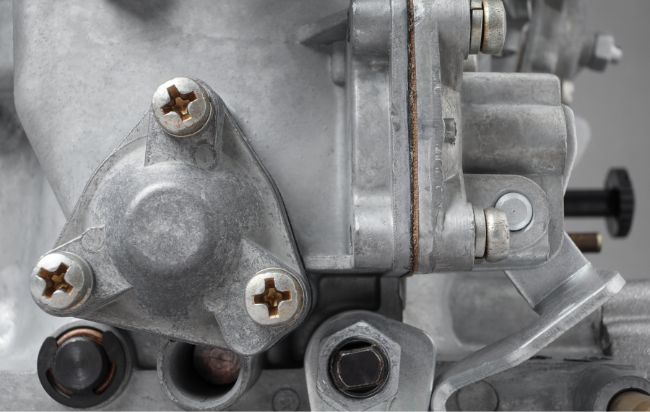
How Does the Carburetor Work?
About two decades ago, most car manufacturers switched to fuel injection systems. Prior to this point, carburetors were a key component for creating the air and fuel mixture. Computer technology began to monitor these systems back in the 1980s to improve fuel efficiency and emissions in response to 1970s-era air quality legislation.
To understand what a carburetor does, it’s essential to know how an engine works. The combustion process creates a chemical reaction that generates energy via heat but also gives off water and carbon dioxide. Air assists with burning fuel at the right rate and amount, which helps generate the energy needed. This is typically 14.7 parts air to one part fuel.
Alterations to this mixture can affect how fuel burns. It’s the carburetor’s job to keep this ratio in check, balancing fuel economy and performance. Initially, these were a tube-shaped component through which air and fuel traveled and were mixed before reaching the engine. Over the decades, this part became more complex, before fuel-injection systems offered greater efficiency.
Carburetors typically include a chamber to hold the car’s fuel, a choke, idling and main jets, a pump and an air-flow restriction mechanism. A valve controls the amount of fluid held in the carburetor. Meanwhile, the choke regulates the amount of air.
After the car starts up, the engine warms. This causes the choke to open, which allows the fuel to progress from the idling jet to the air intake valve. The air-flow restriction lessens the amount of pressure the main jet has to force the fuel into the air stream. This combination results in the ideal air-fuel ratio. The pump will then feed the mixture.
Issues With the Carburetor
Carburetors are a key aspect of performance and operation for older vehicles. Therefore, maintenance is paramount to how your vehicle runs and the emissions it generates. Yet with time, debris and fuel deposits accumulate in and eventually clog the carburetor, affecting how it controls the air and fuel mixture and requiring the part to be cleaned.
Your carburetor needs maintenance when you notice a combination of the following:
- Backfiring as you drive
- Less power as you accelerate
- The engine won’t start or just turns over
- You notice a popping sound – a sign the air-fuel mixture is too lean
- Black smoke comes through the exhaust pipe, meaning too much fuel is in the mixture
- You notice a strange odor similar to paint thinner
Too much debris can prevent the valve from closing, which further alters the air-fuel mixture and can damage the spark plugs. When an older car is not driven frequently, there’s potential for gasoline to thicken from evaporation and gum up the carburetor.
Carburetor Services
Since carburetors are an older part, finding service can be a challenge. DaSilva’s Auto Body is here to help with any related maintenance, whether you’re driving an older car or restoring an antique car. Work with us to:
- Have fuel deposits and other debris cleaned from the carburetor
- Have its fuel efficiency maximized
- Replace, repair or rebuild components
- Diagnose issues related to the carburetor and combustion process
For a vehicle assessment or to learn more about our classic car restoration services, contact our Naugatuck location today.

